The Columbia University Self Service Input/Output Area

Floor Plan of The Columbia University Self Service Input/Output (SSIO) Area, about 1982 (after most of the key punches were replaced by terminals), from a 1982 CUCCA Newsletter. The SSIO area is a sub-basement and has the ambience of a steamship engine room. As of July 2001 the site was renovated and occupied by the Office of Communications Services (OCS), the RolmPhone group. I wasn't able to locate any photos of the SSIO area in its 1970s punchcard heyday. The photos below were taken (possibly by Ben Fried) in 1986. Click any image to enlarge it.
SSIO gallery
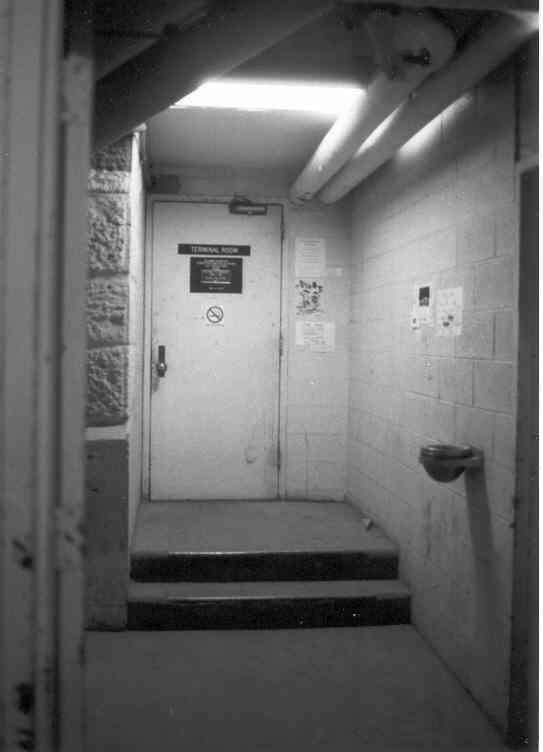
For fifteen years, this was the facade of Columbia computing. To the right is the loading-dock gate, facing North into the steam tunnel that connects Broadway and Amsterdam Avenue and also houses the University's main loading dock further East. To the left but not visible is the freight elevator. This is where all the big computing equipment was delivered, including the DEC-20s.
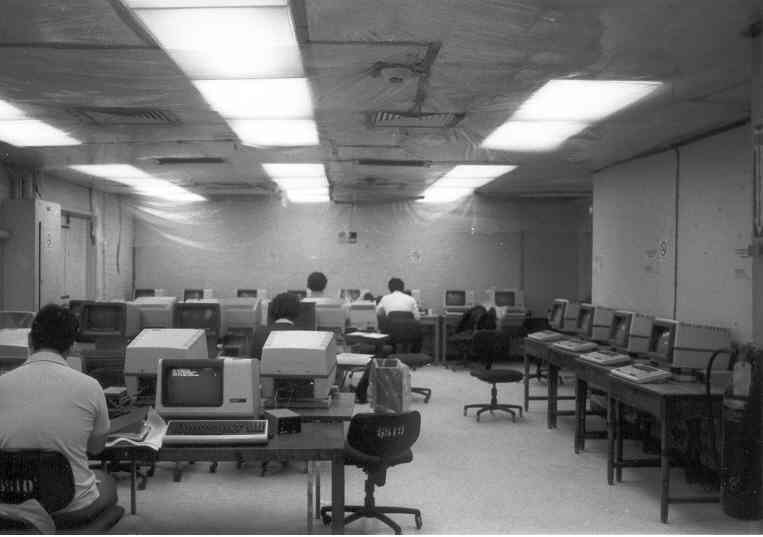
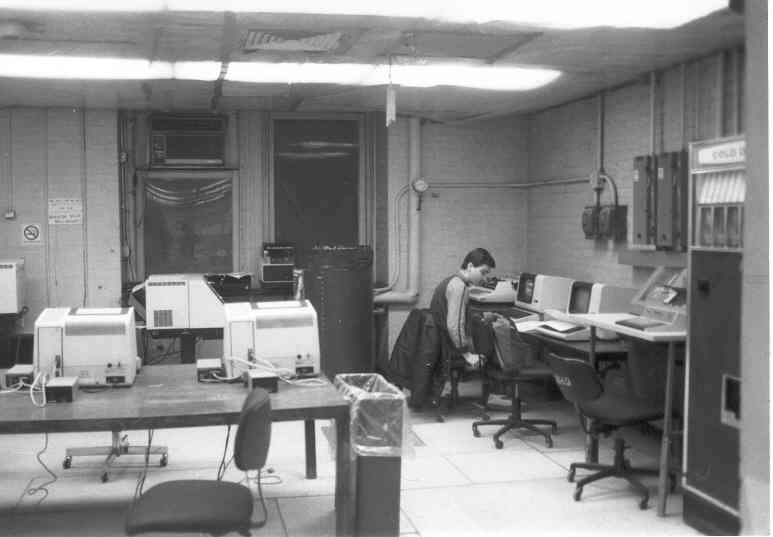
The main terminal room, the former printer area, previous site of a pair IBM 1403 line printers. The windows face out on the steam tunnel.
Right: VT101s, 029 key punch, and soda machine as in the detail view below.
Left and center foreground: VT101s with PACX boxes. Background, a 600lpm Printronix dot matrix line printer, an indestructible workhorse that remained in service more than 10 years (and could easily have lasted another 10) and was capable of printing graphics as well as text. To the left of the seated person: a Diablo daisy-wheel terminal/printer, used for high-quality printing in the pre-laser-printer days.
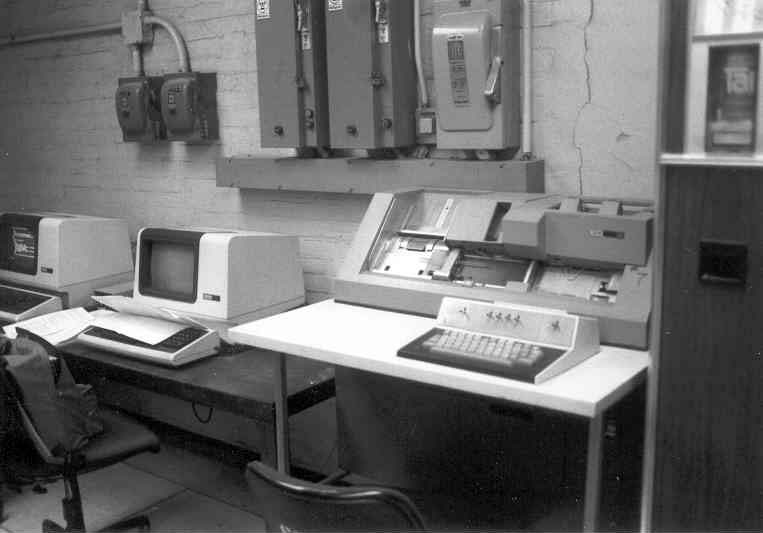
Left: Two DEC VT101 terminals.
Center: an IBM 029 key punch, possibly the last surviving public key punch at Columbia (it is an "express punch", meaning it is elevated and can only be operated from a standing position).
Right: a soda machine.
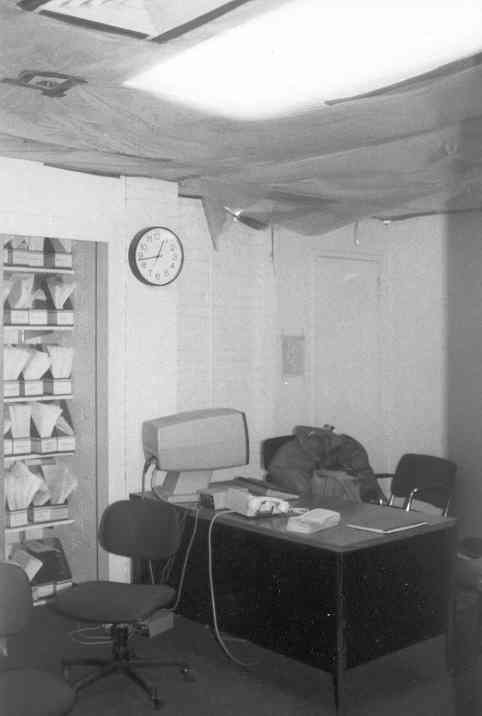
On the desk, an HP 2621 terminal and PACX box (and another one on the floor). The telephone is a pre-Rolm AT&T Centrex multiline phone, with light-up pushbuttons to switch among lines. The bookshelf at left has technical handouts for users to take. Plastic sheets are taped to the ceiling here too, to catch the water. In the early 1970s, this sign on the door read "Insultant" rather than "Consultant". The supplicant's seat is at left.
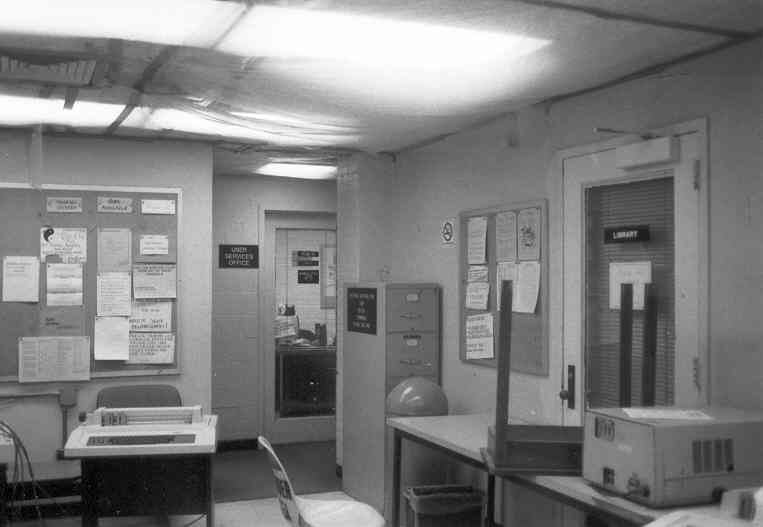
Left: An LA120 DECwriter hardcopy terminal.
Center: The User Services Business Office, which was managed by Marianne Clarke, then Lois Dorman, then Chris Gianone, then Theresa Colmenares, ..., who were the primary point of contact between CUCCA and the user community.
Right: The library, housing manuals, books, handouts, and so forth. Extreme right: the Tektronix hardcopy unit, for printing graphics images from the Tektronix 4010.
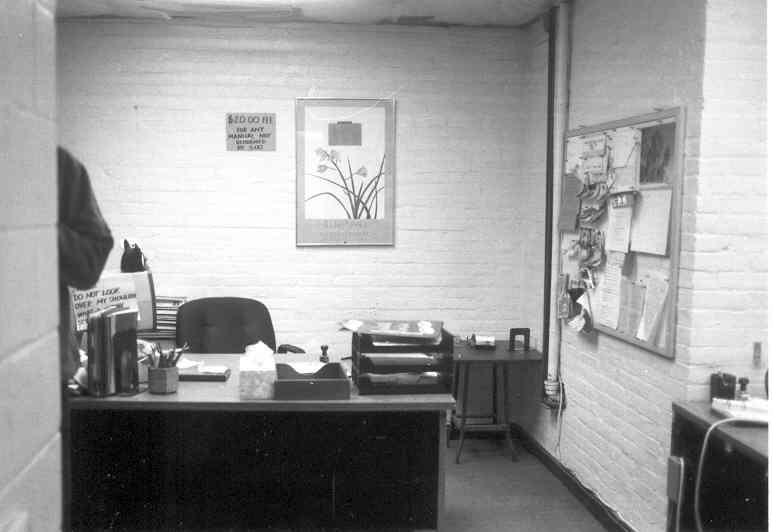
Links: A bit more about SSIO HERE.